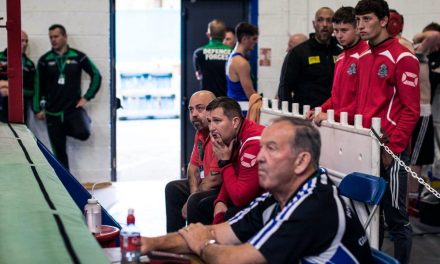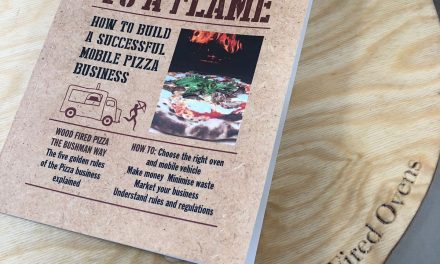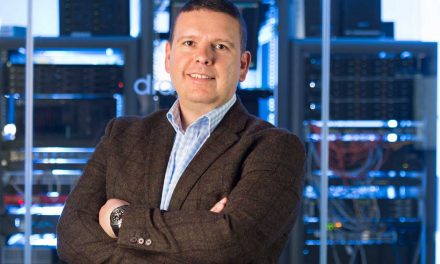STEVE MATTHEWS INTERVIEWS ANDY STACE
Hello everyone and welcome to another edition of Up Close & Personal. Today sees me travelling to the town of Melton Mowbray. A town of culinary excellence and the home of the famous pork pie and stilton cheese. Last month it was steak pies, this month it’s pork pies. This job is not doing my waistline any favours. The reason I mention these two things is because our guest today has a passion for food, and more importantly, he’s doing something about that passion. When I first met Andy Stace it was actually at a John Maxwell event in Florida and funnily enough we met at a bar over some chicken tenders. We share a love of self-development and actually doing something about it, it just happened that we also loved beer and chicken tenders as well. After that we joined the same Mastermind Group and we immediately hit it off. He has a colourful back story from graphic designer, photographer, international property developer and old school raver. I think he even may have been a DJ at one stage, so I think he’s probably a closet hippy without the long hair. I’m sure he’ll tell us more about that, and the rise to taking the family roofing business to a million- pound business and the trials and tribulations of that. Despite running the roofing business, in a period of self-reflection Andy realised that his passion was food and that saw him invest in a mobile food wagon called The Griddle. Which, if you’re into street food, is a must visit. Andy’s a great guy and I’m excited for you to hear from him, so without further ado, the ruler of roofs, the sultan of street food… Andy Stace. How are you today?
Andy Stace: Thank you very much, very well thanks Steve.
Steve Matthews: You can’t go wrong with that introduction Andy, I don’t think.
AS: It was perfect! It made me sound better than I am.
SM: That’s what it’s supposed to do… Before we go into the street food, I wanted to talk about the back story. How do you go from graphic design to a million-pound roofing company?
AS: Graphic design was something I did at school and I was sort of ok at art. My uncle on my Mum’s side owned a graphic design studio in Chelsea in London so I used to spend quite a bit of time with him in some holidays, sort of living and working with him. I got to sixteen and didn’t really know what I wanted to do and Mum pushed me down that road because it was something she’d seen her brother get success in. Perhaps the only thing that she saw I had a bit of flair for. I was talking to my daughter about this yesterday actually because she does graphic design as part of her Media course. I said, it might have been different and I might have had a career in graphic design if the advent of desk computers had have come 5/10 years earlier, because when I was doing it, it was still pen and paper… magic markers, compasses, French curves and all the rest of it. Now you can do so much more using a Mac or a PC where you can actually do better concepts without having to do the actual drawing part of it, which can get a bit messy if you’re not the neatest of people. And it’s a lot faster obviously, to change ideas and see what different colour schemes work if you’re using a computer, so I think that was one of the restrictions that perhaps I wasn’t able to creatively get around at that time. So, I did my course at Loughborough College and then in the summer holidays I worked for my Mum’s other brother who was in roofing. So I slowly picked up the tricks of the trade with the roofing contracting and then between the age 18 and 25, I think I was when I started my first roofing business, I did a whole variety of different jobs. Like you said, I was a DJ at one point, a manager of a shoe shop, I was an electrician, I worked in a window factory… I’ve done loads of stuff and loved it all to a degree. Met my wife Jayne and very quickly discovered we were going to have a family, so roofing was the one thing that I could instantly set a business up in and do really well, and get a mortgage and get a house for my new family that was on the way, so that’s the reason I went into roofing. So that’s how you go from graphic designer to roofer. If anybody wants to do that, I would advise it, it was great fun at the time.
SM: I bet as a young, impressionable youngster, living in Chelsea in London had its privileges. When was that, back in the 80’s was it?
AS: Yes, that would have been in the 80’s, I think I was 16 at the time so it would have been 1988.
SM: Same age as me.
AS: At the time it was 50 yards away from where Princess Di used to go to the gym in Chelsea Harbour, so quite often you’d see her pulling up. It was in the days of, I think it was Take That I saw down there once. All piling in Chelsea Harbour, a flashy modern place at the time. It was an eye opener.
SM: It’s funny, we’ve got some similarities there, we talked about this earlier. My uncle had a big say in where I am today, my Mother’s brother and obviously uncles have led you. You said one was a graphic designer and the other a roofer. So, the uncles have had a big say on you as well… I don’t know if that’s a good or a bad thing.
AS: A bit of both I think.
SM: Possibly… So, you’ve got the roofing company, what’s the state of play with that? Is it going well?
AS: Yea, it’s going really well. It consistently did about a quarter of a million pound a year. That was with me on the tools and a few other guys helping. When I got into the entrepreneur Mastermind circles in 2014 we accelerated that right up to a million pound. So, within 4 years, just being around people that are growth orientated and people that have helped us develop systems and develop new awareness’s around the business. You know, how to run a business, what sort of spreadsheets you’d need to control your finances, your marketing, your sales and keeping a track of stuff. All the stuff that normal business owners just sort of stick a wet finger in the air and hope for the wind. You have to monitor and measure everything, so being amongst people that were able to guide me and give me the tools to do that… gave us a lot more control in the business. Enabled us to grow it four times. So yes, going really well and we’ve now got a business that’s heading towards being able to run on its own systems without personalities. So that makes it sellable, if you ever want to sell it. It also makes it possible for me to extract myself from that business and allow other people to work, just using the systems I’ve put in place. To allow me the freedom to go off and start doing different projects, if that’s what I want to do.
SM: I think that’s a really good point actually, something I know we’re both really passionate about is the self-extraction. I’ve got so many customers and clients that are so into the day to day and so heavily involved in the day to day, they just have no ability to extract themselves. We were at a friend’s BBQ the other day and by chance met a really good customer of mine there. I asked him how the business was going and he said, “I’ve just been away to France, we booked 2 weeks but I had to come back after 6 days because the phone didn’t stop ringing and it was carnage in the office”. And that for me is a nightmare. I always set my business so that wouldn’t happen, and I know it does happen at the start and as you mentioned, you were on the tools. I know you’re passionate about moving yourself away from that technician role that Gerber talks about. Maybe you can talk about that for us?
AS: Yea, sure. I felt the same up until about maybe a year or 2 years ago. If I’d have gone away for any period of time from the business, things would have deteriorated very quickly but now we’ve got different people in different roles that have got a specific task list of stuff they do in the business and a bunch of systems and processes that they work to and a good communication process as well. Which, if you can get everybody to work to that, we have a daily huddle which means that the finance, the installation and the sales department all talk for 15 minutes a day. That’s all it needs to find out what’s happening that day… which jobs have started, which have finished, which need invoicing, any extras that have arisen on jobs. All the little details that sometimes can get lost, so putting all that structure in place is vital if you want some freedom from your business. And let’s be fair, nobody goes into business thinking “this is going to be great, I’m going to work for myself and I’m going to do 13 hours a day”, nobody wants that, but that’s what happens, and unless you can design the whole structure so other people can do it so that you don’t have to be there all the time, that’s what you’ll end up doing. Now I could walk away from the business for a month, provided I can find cover for the daily stuff that I’m doing, which is sales at the moment, then the rest of the business will run itself… Well, the people in the business will run it obviously.
SM: I think that’s key, I know it’s a book that had a massive, profound effect on me, the E-Myth by Gerber. I was lucky enough to meet him once, I don’t know if I told you this story but, obviously I wasn’t on my own, I hasten to add, there was about a 1000 people in the room and he was speaking at this event. He said, “I want every single one of you to pick up the phone and ring the person that you’ve left in charge today when you are here with me, and I want you to tell them that you’re not coming back for 2 weeks”. And he just left it, he took a sip of his coffee or tea or whatever he was drinking and he let that settle into the room. The murmur got louder, people were looking at each and there were some people in a blind state of panic. After what was probably only about a minute but felt like a lifetime, he said “I’m not going to make you do that today but if you can’t make that phone call, you haven’t got a business, you’ve got a job”…
Listen to the rest of the interview at 729Renegades.com/podcast





